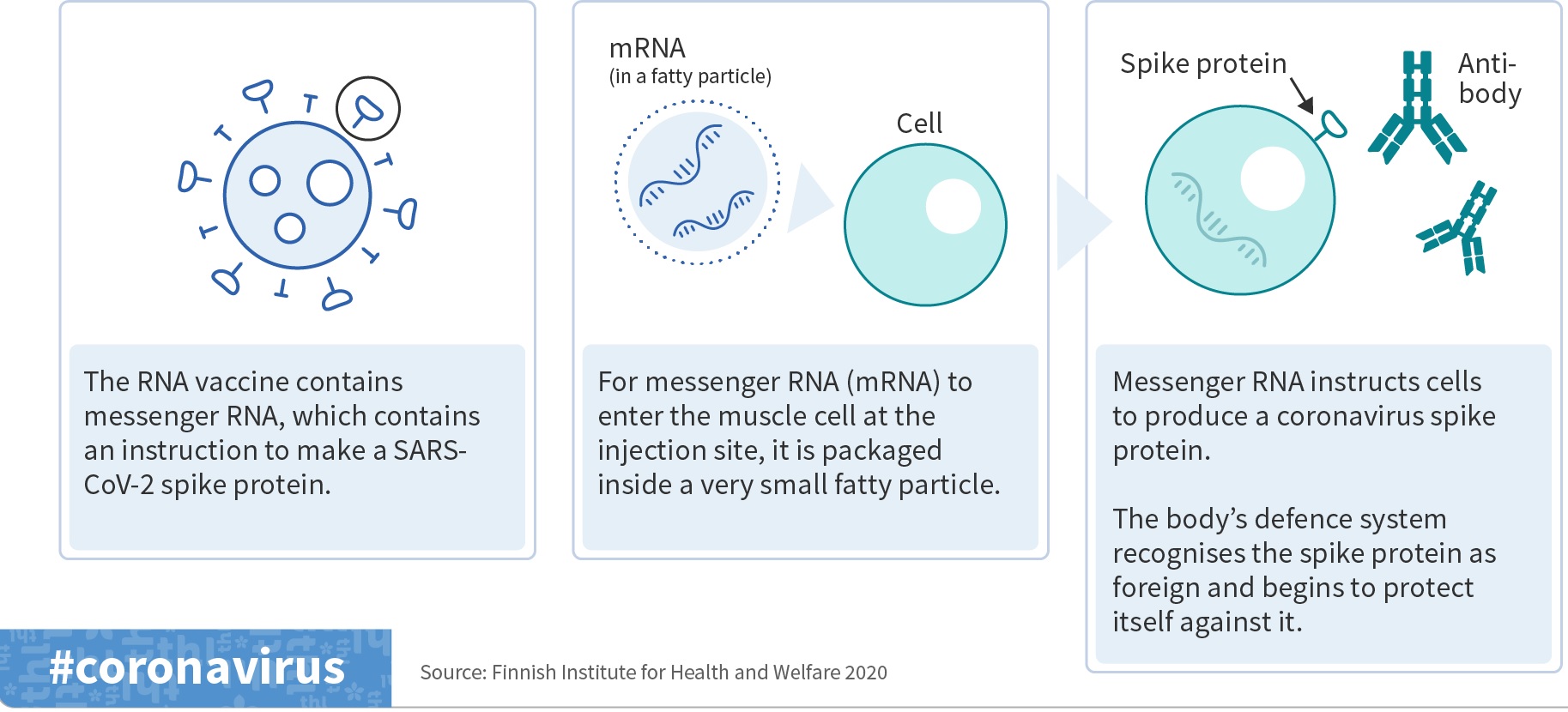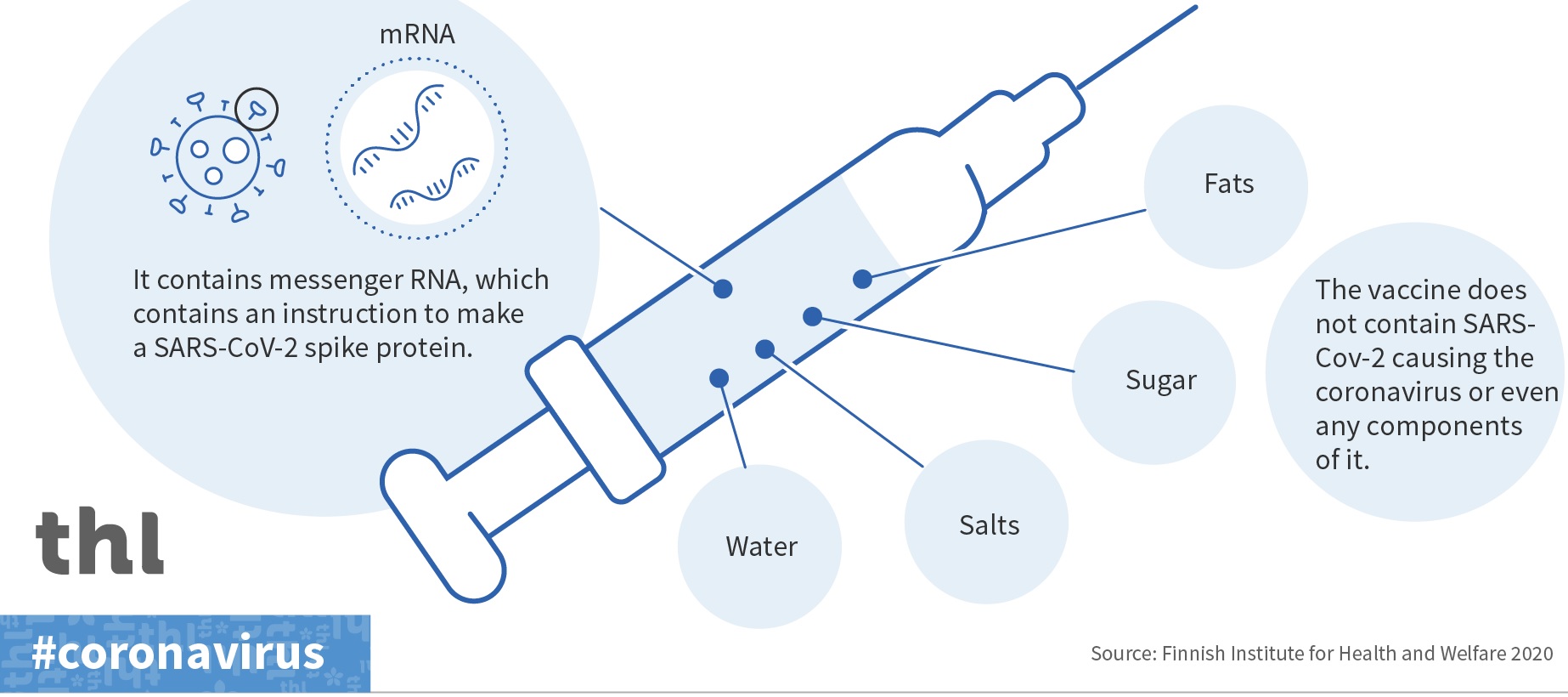THL mRNA Vaccines FAQ Finland : Finnish Institute Health & Welfare
Organization : Finnish Institute Health & Welfare
Facility : mRNA Vaccines FAQ
Country : Finland
Website : https://thl.fi/en/web/infectious-diseases-and-vaccinations/what-s-new/coronavirus-covid-19-latest-updates/vaccines-and-coronavirus/mrna-vaccines-faq
| Want to comment on this post? Go to bottom of this page. |
|---|
THL mRNA Vaccines FAQ
The mRNA vaccines used in Finland are Pfizer-BioNTech’s Comirnaty vaccine and Moderna’s Spikevax vaccine.
1. What is RNA?
RNA is ribonucleic acid. Our cells contain different types of ribonucleic acid with different roles. For example, the code contained in messenger RNA (mRNA) is an instruction that tells the cell how to make proteins needed by the body.
2. How does a mRNA vaccine work?
Previous vaccines have been based on the fact that they contain an antigen as an active substance. The antigen could be a part of a certain virus, for example. A vaccine aims to induce immunity especially against the specific point at which the virus attaches to the host cell.

RNA vaccines contain messenger RNA (mRNA). Because of the mRNA, the muscle cells at the injection site start to produce an active substance, in this case a surface protein of the COVID-19 virus.
The body’s immune system recognises that surface protein as foreign and starts to produce an antibody against it. This teaches the body to fight the actual COVID-19 virus in case a pathogenic virus enters the body.
3. Where does the mRNA contained in the vaccine come from?
The mRNA contained in the vaccines is produced synthetically in laboratories. No animal or human cells are needed for the production.
4. Have mRNA vaccines been used before?
No. Vaccinations based on RNA have been developed since the 1990s, underpinned particularly by the ebola epidemics. Previously, mRNA vaccines have been studied and developed against rabies.
5. What does a mRNA vaccine contain?
The vaccine does not contain the SARS-CoV-2 virus that causes COVID-19 disease or even parts of that virus. Instead, the vaccine contains messenger RNA that contains a code for a surface protein of the SARS-CoV-2 virus (the so-called spike protein).

The vaccine also contains water, salts, sugars and lipids (fats). In the vaccine, the mRNA is placed inside a tiny lipid particle that helps to deliver it to a muscle cell.
6. Can the mRNA contained in the vaccine remain in the DNA of human cells?
Because it is RNA, it cannot integrate into the DNA of the vaccinated cell. In other words, a mRNA vaccine cannot change human DNA. In addition, the RNA contained in the vaccine is quickly broken down in the body.
7. Why have mRNA vaccines been developed and why was new technology necessary?
Messenger RNA (mRNA) vaccines were invented already in the 1990s. The first vaccine candidates did not adequately enhance resistance in humans.
The more advanced versions of mRNA vaccines, previous experience with pandemics caused by a virus and especially the ebola epidemics in Africa accelerated the development of the mRNA technology.
A new way to deliver a messenger RNA into a cell and to use the human body to produce the active substance, i.e. the antigen, have shortened the time needed to develop vaccines.